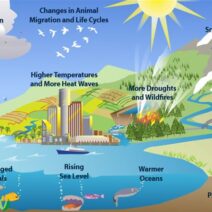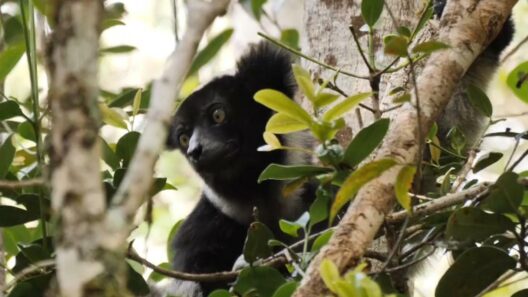As global temperatures continue to rise, the quest for effective climate change mitigation strategies has intensified. One of the most popular and seemingly straightforward solutions is the planting of trees. However, the efficacy of reforestation as a solution to global warming merits a detailed exploration. This discourse delves into the nuanced realities surrounding tree planting and its role in combating climate change.
At first glance, the logic appears indisputable: trees absorb carbon dioxide (CO2), a primary greenhouse gas, sequestering carbon in their biomass. Given this fundamental ecological function, planting trees is often heralded as a panacea for the burgeoning climate crisis. Yet, the simplistic notion that more trees necessarily equates to a cooler planet is oversimplified and overlooks several critical factors.
First, it is essential to understand the types of trees being planted. Not all trees are equal in their carbon-absorbing capabilities. Fast-growing species that thrive in a wide range of conditions can sequester substantial amounts of CO2 rapidly. However, the introduction of non-native species can lead to ecological imbalances, harming local fauna and flora. Invasive plants may outcompete native species, leading to loss of biodiversity, which is integral for ecosystem resilience.
Moreover, the location of tree planting efforts plays a pivotal role. For instance, planting trees in arid regions may not yield the intended benefits. Trees generally require significant water resources, and excessive planting in water-scarce areas could exacerbate local drought conditions. In contrast, wetland restoration—preserving and enhancing existing natural ecosystems—often provides a more immediate and effective means of carbon sequestration.
The age of the trees also matters. Young saplings absorb carbon at a slower rate compared to their mature counterparts. It can take decades, if not centuries, for newly planted trees to reach a size where their carbon sequestration capabilities are maximized. Therefore, planting trees as an immediate response to climate change may yield minimal benefits in the short term.
Additionally, the assumption that trees will remain untouched and undamaged is naive. Deforestation, pests, disease, climate fluctuations, and wildfires can threaten newly planted forests. A study revealed that a significant percentage of planted trees do not survive to maturity due to environmental stresses or human interference. Thus, the preservation of existing forests often proves to be a more practical approach to reducing atmospheric CO2 levels.
Beyond the biological considerations, socio-economic factors significantly influence the success of tree planting initiatives. In many instances, tree planting is undertaken in regions where local communities rely on land for agricultural production or other livelihoods. Such a scenario creates conflicts between conservation objectives and socio-economic necessities. Communities may prioritize their immediate needs over environmental aspirations, leading to tree loss through logging or agriculture expansion.
This brings to light the importance of integrating social justice into environmental initiatives. Empowering local communities through education and participation in conservation projects fosters stewardship for the environment. Trees planted with community buy-in are more likely to thrive and contribute meaningfully to carbon sequestration efforts.
Another critical point of contention lies in the concept of “carbon offsets.” Many corporations and countries engage in tree-planting programs as a means to offset their carbon emissions. This practice, while theoretically valid, often leads to a problematic mentality where businesses might prioritize tree planting over making substantive reductions in their carbon footprints. A focus on offsets can dilute the urgency of reducing greenhouse gas emissions at the source.
Furthermore, while trees play a crucial role in the carbon cycle, it’s imperative to acknowledge that they are but one component of a broader environmental solution. Transitioning to renewable energy, enhancing energy efficiency, reducing waste, and improving agricultural practices constitute a comprehensive strategy to combat climate change. These solutions must apply in conjunction with reforestation efforts to create a synergistic impact on global warming.
The challenge of climate change prompts the necessity for a holistic view. Policies that prioritize tree planting must also emphasize the protection of existing forests, sustainable forestry practices, and innovative land management strategies. A mere increase in tree numbers is insufficient; the health and functionality of ecosystems must remain at the forefront of conservation efforts.
In conclusion, the planting of trees as a response to climate change is a nuanced undertaking fraught with complexities. It can contribute positively to mitigating the effects of global warming, yet it is neither a silver bullet nor an isolated solution. To truly address the climate crisis, it is vital to employ a multifaceted approach that encompasses ecological, social, and economic dimensions. The focus should not only be on planting more trees but on fostering a widespread understanding of ecological interconnectedness and sustainability. Only through collaborative, informed action can meaningful strides be made toward safeguarding our planet for generations to come.







